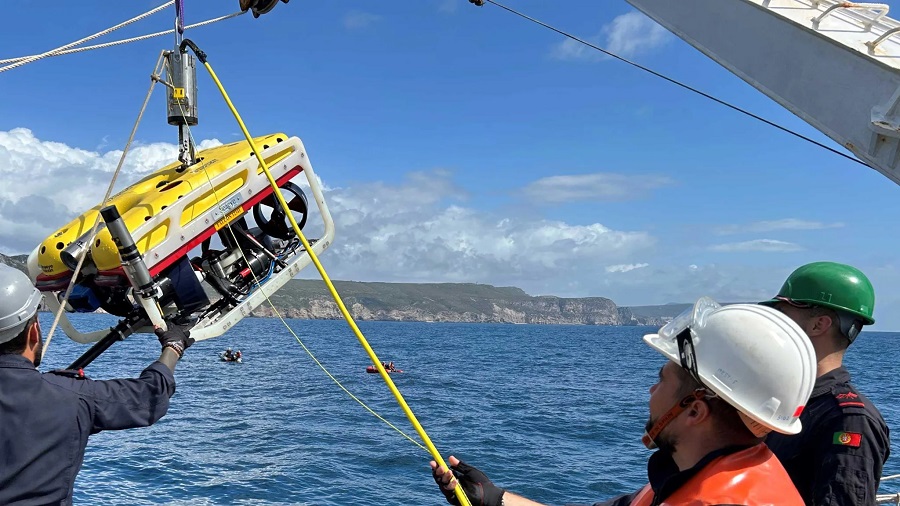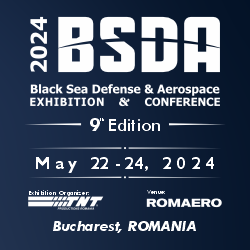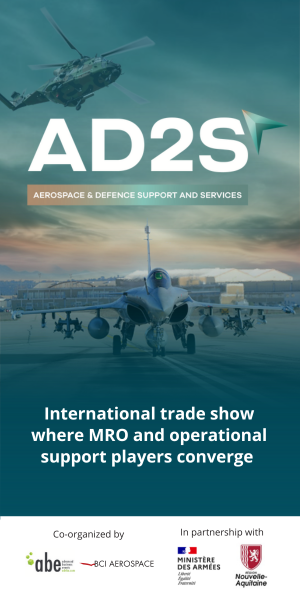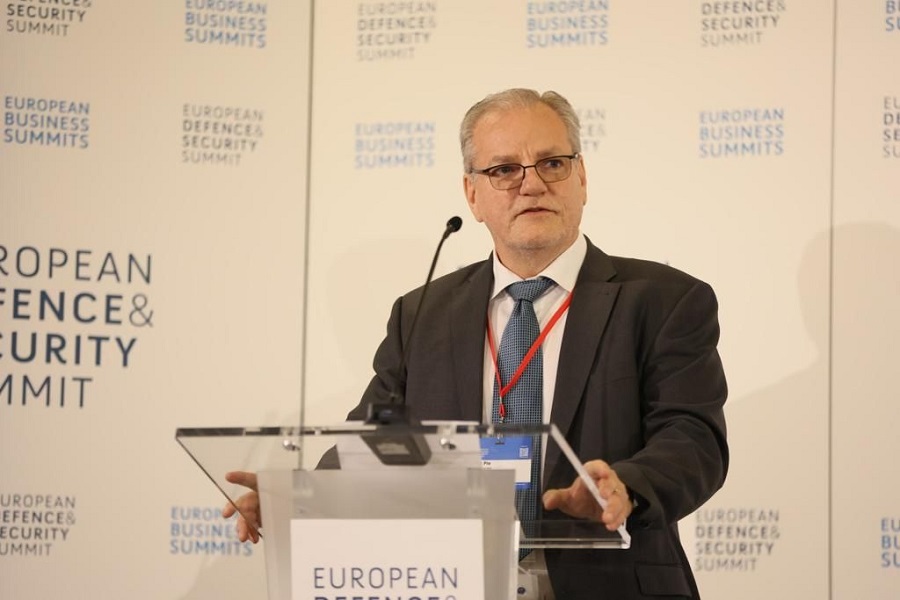In September, Saab deployed the AUV62-AT anti-submarine warfare training target, alongside the Remotely Operated Vehicle (ROV), Seaeye Falcon. The Seaeye Falcon was operated from the Portuguese Navy Vessel, Dom Carlos I, while the AUV62-AT was operated from a naval base. Both systems participated throughout the two exercises, REPMUS and DYNAMIC MESSENGER, over a total of three weeks. The aim of the exercises was to explore experimental marine unmanned systems in an operational context.
Exploring unmanned systems in NATO exercises
The exercises, known as REPMUS and DYNAMIC MESSENGER, served as a dynamic platform to explore and evaluate experimental marine unmanned systems within a realistic operational context. REPMUS focused on testing unmanned systems and conducting underwater Explosive Ordnance Disposal (EOD) operations. The exercise is co-organised by the NATO Centre for Maritime Research and Experimentation (CMRE).
DYNAMIC MESSENGER is held around REPMUS, conducted by Allied Command Transformation, alongside Allied Maritime Command. The aim of the exercise is to develop and integrate unmanned maritime systems into NATO’s operational activities, so as to strengthen its capabilities in all types of operational areas.
Seaeye Falcon and AUV62-AT
Saab’s AUV62-AT, in co-operation with Sweden’s defence procurement agency, FMV, supported Anti-Submarine Warfare systems brought by navies, industry and academic experts, which allowed the systems to be tested with a higher level of technical maturity. It did this by being used to mimic the acoustic profile of a submarine, tailored for the exercises, that they could then hunt for and track. The data AUV62-AT collected was then used to provide rapid feedback to the various systems, informing future methods of deployment. It participated and delivered beyond expectations, proving to be a highly appreciated resource over the course of the exercise.
As part of the Critical Undersea Infrastructure (CUI) aspects of the exercises, the Seaeye Falcon demonstrated its operational flexibility and reliability in a range of underwater tasks. It was crucial in the identification, relocation and neutralisation of simulated Underwater Explosive Devices placed on an underwater communications cable. This included the laying of targets and conducting underwater procedures used to make suspicious hazards safe, and their remote recovery for forensic analysis. This phase of the exercise was designed and conducted by Saab UK.
Saab’s commitment to future collaborations
With the attack of the Nord Stream pipeline in September 2022, the potential vulnerability on Critical Undersea Infrastructure, such as cables carrying internet services and energy pipelines, became clear. The Ministry of Defence suggests 99% of global internet traffic goes through these undersea cables. How we tackle the developing threats against our Critical Undersea Infrastructure, a defensive capability, will no doubt see more activity in the coming years.
As the global landscape evolves, Saab looks forward to participating in future REPMUS and DYNAMIC MESSENGER exercises, bringing forth an expanded portfolio of capabilities. These collaborative efforts within NATO exemplify a collective commitment to addressing and countering emerging threats to undersea infrastructure on a global scale. Saab’s role in these exercises not only reinforces its technological prowess but also underscores its dedication to advancing global security through innovative defence solutions, with the overall goal to keep people and society safe.

























